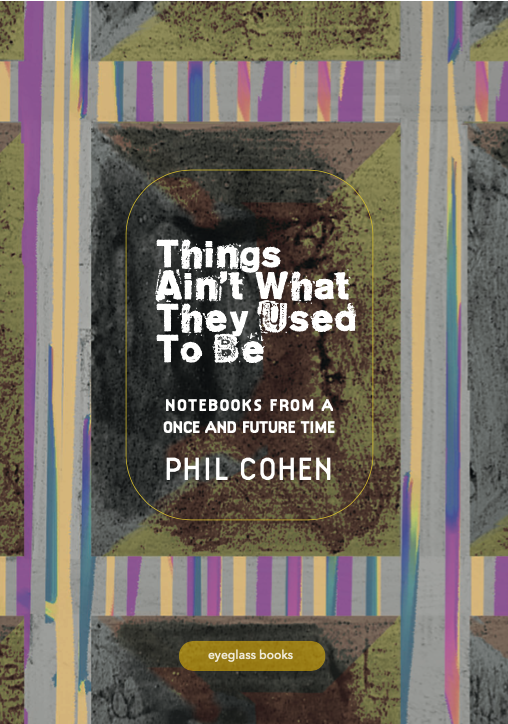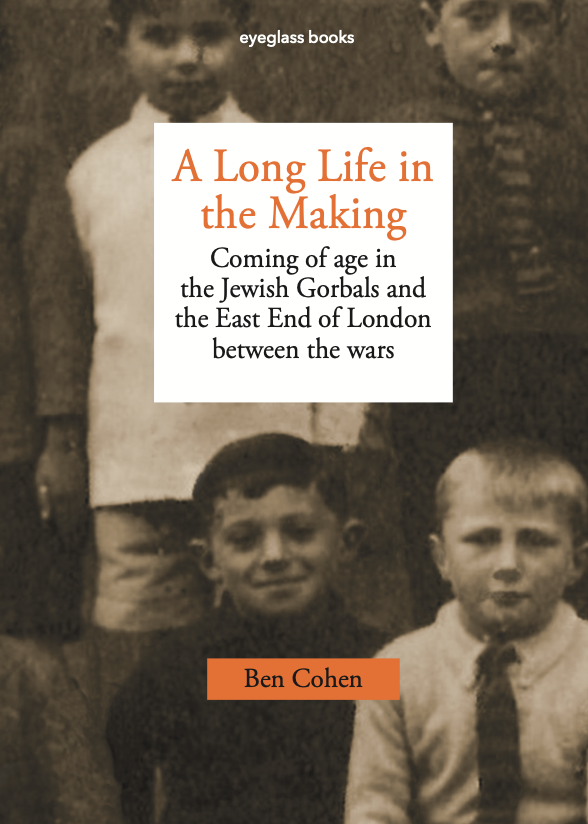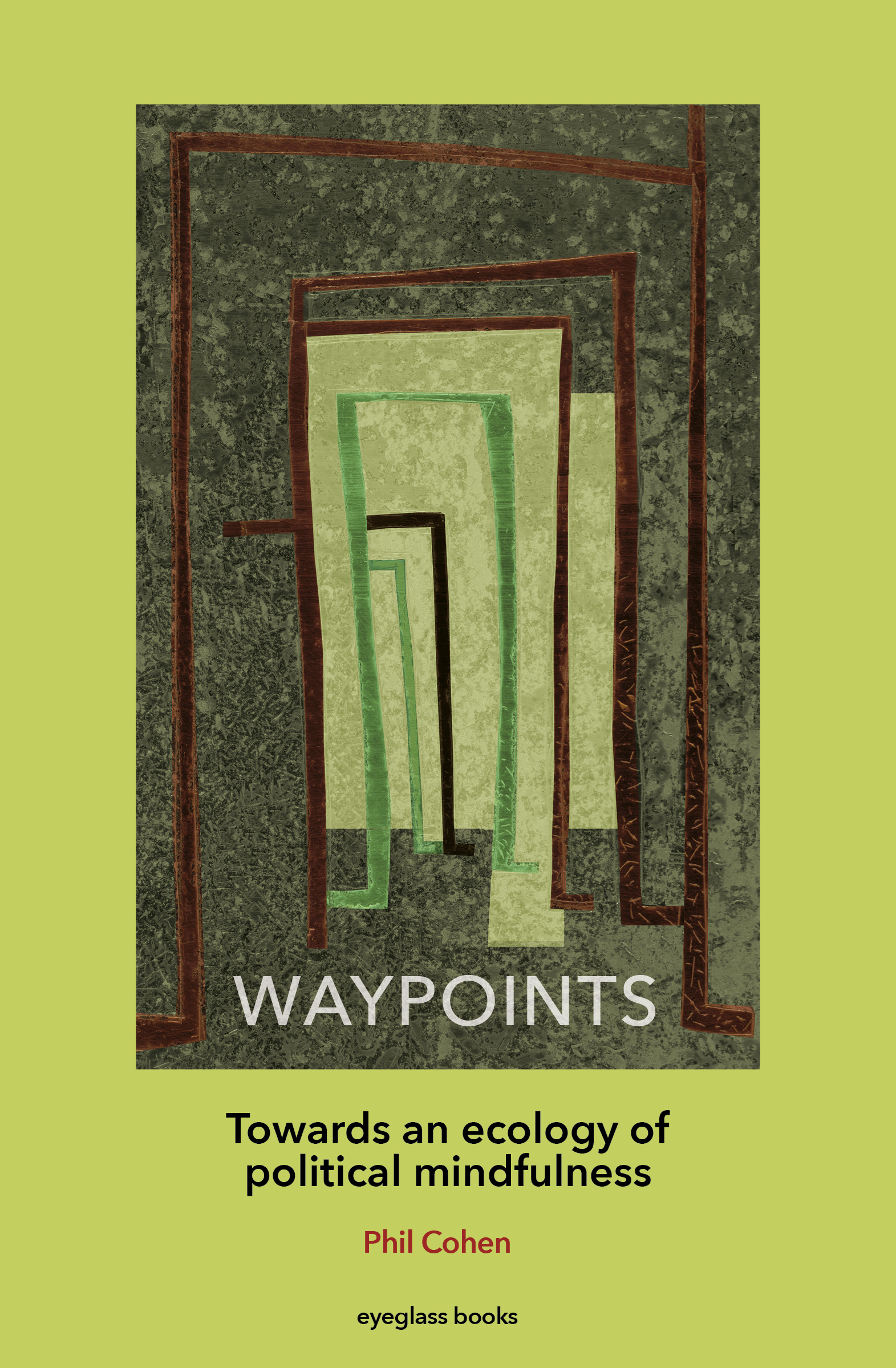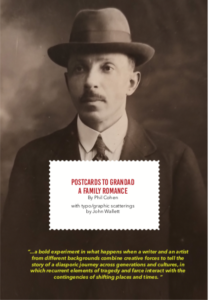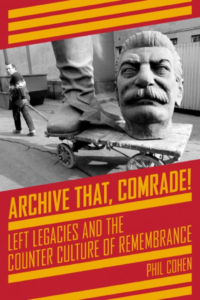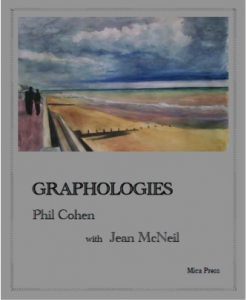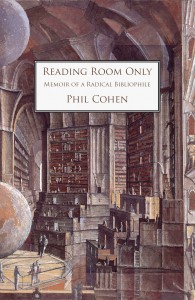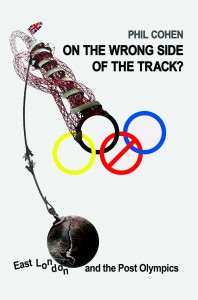This is the text of a talk I gave to a conference examining the legacy of the London 2012 Olympics ten years on, organised by University College London in September 2022. The talk was accompanied by a Powerpoint.
As evening drew on we went to what was left of Tower Bridge to watch ‘The Post-Olympic Dream’, marveling at the flickering figures as they vaulted over the sandbagged parapets. Our gaze was inevitably drawn downriver to the famous motto Amplius, Charius, Colossicus, written in neon lipstick against the city’s darkening rim. It was time to visit the Olympic Park and sample the remaindered glory of the games. We hired a gondola at the Isle of Dogs and as we approached the site were overwhelmed by the awesome spectacle of the Orbital Tower, now leaning more crazily than ever Pisa’s did, with noxious weeds from foreign parts clinging to its superstructure creating a veritable hanging garden of London Babylon.
We disembarked at a pontoon where in happier days the late Sir David Beckham had handed the Olympic torch to Bradley Wiggins, fresh from his triumph in the Tour de France. Little did either of them dream of the disaster to come. As we made our way across the deserted walkways toward the tower we were dismayed by the signs of neglect and decay all around: broken railings, park benches vandalised, drought-withered gardens, a derelict open air café where only a few tables bolted to the ground remained as mute witness to the conviviality they had once entertained. And everywhere the hidden hand of the graffiti artist mocking the ambitions the 2012 tag had once evoked – ‘Live the nightmare’ … ‘Everyone’s a loser’ … ‘Betray a generation’ – and other, cruder, slogans were blazoned in dayglow colours on wall after crumbling wall.
This is how my book of the London 2012 Olympics begins. Now why should a book which documents the response of East London’s diverse communities to the advent of the Olympics on their doorstep, and tries to understand that response through a deep ethnography of their changing forms of livelihood, life style and life story telling since the 1960’s why should such ao project begin with such a bleak dystopian vision of the post Olympic city, where even the once famous Games mascots are reduced to panhandling in order to make a living
The reason has a lot to do with my vision of the Olympics as a tragi-comic enterprise : comic in its vainglorious ambition to remake the city in its own image and the absurd public expectations this arouses. Tragic in its failure to deliver on its promises , for the idealistic rhetorics about living the dream of a world in which social divisions and inequalities are magically suspended inevitably founders against the hysterical materialism which shapes the fabrications of its legacies on the ground..
How appropriate then that London 2012 should be presided over by a mayor whose own career so richly embodied these same comic and tragic qualities and was remarkable chiefly for its increasingly hollow triumphalism.
When I told the group of local residents with whom I have been working over the past 15 years , that I was going to talk at a conference about the 2012 legacy, they laughed and said ‘what legacy?. I tried to explain that this conference was about trying to understand why the legacy never happened, at least not for people like them in whose name and for whose benefit the whole thing was supposedly being organised. How can there be a legacy which actively disinherits the people who are supposed to be its beneficiaries? In existential terms a legacy is supposed to be something left behind for those who have been left behind by the end of a life or a project, it is a gift from the dead to the living, with or without strings and which entails something gained, as compensation for a loss. In legal contractual terms a legacy entails the free transfer of a material and/or symbolic asset ( property, money, goods) from a donor to a recipient and is accomplished through a declarative statement which it is binding on the trustees. Clearly the legacy statements issued by the Olympic authorities were never that, they were only ever pseudo-performative . And ashas been frequently pointed out legacy is the absent centre of this particular regeneration discourse. But could there be a post- Olympic legacy that substantially compensates ordinary working class East Londoners for the sense of loss and dislocation many have experienced as a direct or indirect result of the 2012 Games . Is a truly reparative legacy still possible and if so what form could it take?
Legacy values tournament
The Olympics is often described as a values tournament, a clash of sporting cultures , civilisations or political ideologies – certainly it was that during the old cold war and may will be once again if present geo-political trends continue. But what legacy values are in play here.
The following schema tries to identify the different paradigms, which in a variety of strong and weak combinations characterise the construction of post Olympic discourses and the transformation of legacy into inheritance :
- GIFT LEGACY Heritage Heirloom (Moral Economy)
- PAYBACK LEGACY Dividend Endowment (Market Economy)
Gift legacies are conveyanced within the framework of a moral economy, the beneficiaries are identified in terms of their claims to moral entitlement. Within this frame we can distinguish between an heirloom asset, something which is regarded as being held in trust by both donor and recipient , who are its guardians rather than its owners and whose mission is to preserve it intact, to hand it down unaltered fro m generation to generation. In contrast a heritage asset is held in common ownership , with the aim not simply to preserve but to enhance its value , it is always transformed in the process of its transmission.
In contrast payback legacies operate within the discursive frame of market economies of worth and in two distinct modes : As dividends of various kinds issued to stakeholders who have made a substantial investment in the Olympic enterprise or as endowments given to social or institutional actors who are thereby committed to make a continuing contribution to the legitimation of the Olympic enterprise going forward . Each of the four thus has a distinctive time sdignature.
We can look as particular instances to see how various trade offs and compromises between the market and moral economies works . Take for example the Olympic Stadium. Located within a structure of conveyancing designed to maximise payback, the stadium can only be ‘sold’ as an investment opportunity, and a source of future dividends . Yet it is also a heritage site and potentially a popular lieu de memoire. Inscribed within the conveyance of a gift legacy it could be offered as a public endowment to various community stakeholders but in the event it took some persuading for Hammers fans to claim as an heirloom in exchange for Upton park. Lets also note here that gift legacies can be negative as well as positive- the famous poisoned chalice.
Another example would be the generational contract which was such a central feature of the 2012 legacy discourse and the social compact with the host community in East London . As we have heard , whether it is a question of educational attainment, job opportunities or housing or the ,so called health dividend, the proposition that the life chances of the next generation of local children would be the same as those born in more affluent areas, was only secured by ensuring that many of the new age cohort were the offspring of middle class gentrifiers moving into the area.
This brings me to my second main point. The brutal binarism that governs official talk about legacy, the distinction between so called hard and soft legacies is an ideological fiction that works to split and mystify public perceptions of what is at stake. In fact these two are always already entangled. As we saw under lockdown the city of stone remains haunted by the city of flesh , even and perhaps especially in its temporary absence.
( When I talk of the Olympic Park as a site of unacknowledged haunting, I am not just referring to the fact that those who made all those extravagant legacy promises about levelling up may be suffering from a bad conscience for having deceived so many people or having believed their own propaganda . It is just as much about t the de-materialisation of a positive legacy for so many of its putative legatees which has had such a powerful impact on their everyday lives ,including their mental health .In fact I am talking about a constitutive feature of all regeneration projects, centred on mega events which arises from an inbuilt principle of dislocation between the event trajectory and its afterwardness ..
Legacy is the ghost part of the Olympic enterprise, the part that is indispensable to achieving a successful bid and outcome , but whose materialisation can never be guaranteed , and whose presence/absence continues to haunt the project long after its supposed conclusion . The Post Olympics, has a peculiar chrono-topography – for of course we are dealing with the always unstable relation between a site specific and time delimited event that is no longer (the Games) , haunting something that has not yet and may never happen ( the promised legacy outcomes).
From this perspective, the Post Olympic city is a city haunted by counter-finality , by the ghosts of buildings and places that might have been , by projects which might have made a difference , if only , if only, . The Olympic movement itself is a shadow of what might once have been a progressive force ;indeed today it is less a movement than a series of discrete, compulsively repeated ritual moments decentred around civic nationalisms.
Post Olympic Hauntology is thus a complex phenomenon. Here I can only deal with one or two of these aspects..
TIME BOMBS AND AFTERWARDNESS
The uncertainty principles I just mentioned were directly present in the recurrent threats of unexploded bombs and environmental hazard that punctuated the building out of the Olympic Park and have continued up to the present. These time bombs, created by capitalism’s war against nature as well as by the attack from the air on the populations of East London , came to represent the unpredictable irruption of a hidden , forgotten history , a return of the repressed in all its phantom materiality.
In the recent re- interviews I have done with those who worked on the dig, design and demolish phase in 2007/8 and those who lived near the site , I have identified three broad attitudes or positions towards the afterwardness of London 2012 .
Those I call the revenants have occasionally revisited the site and each time found that what was once so intimately familiar has become more and more strange. As they walk around the Park they have become connoisseurs of the Uncanny. Hammer’s fans for whom the Stadium represents a dramatic uprooting from their familiar home from home at Upton Park , have also found themselves populating this new and still largely vacant memoryscape with the ghosts of Bobby Moore, Trevor Brooking, John Charles ,Billy Bond Geoff Hurst and Clyde Best
A second group I have called the nostalgics , drawing on the important distinction between its restorative and reflective forms made my Svetlana Boym in her book The future of nostalgia:
What they have in common: The Olympic Ideal as a Home for imagined community
- Restorative nostalgia: Recreation of the ambiance or spirit of Games Time through commemorative events and re-unions – the twenty twelvers
- There is also a diffuse longing to return to a more optimistic future associated with an imagined past . Remembering the opening and closing ceremonies as exemplifying the dream of an enchanted island nation or race once more sovereign and at peace with itself or Once upon a time in Brexitland
- More reflectively there can a reading of the ceremonies as about the renewal of shared heritage and the re-invention 0f home grown multicultural traditions
Finally there are the disenchanted whose voices are rarely heard above the din created by the celebratory proclamations of the Olympophiles and the denunciatory rants of the Olympophobes.
The revenant , the nostalgic and the disenchanted are three different responses to a profound and generalised sense of dislocation between the no longer and the not yet, between what has been left behind and who has been left behind . Its a structure of feeling which has intensified over the last ten years. It is this sensibility we have sought to address and render more articulate in Groundbreakers, our immersive guide and trail to the back story of the Olympic Park ,’ from the Bronze age to the Digital Age’.
The Groundbreakers is a stab at creating a reparative legacy as a common and inclusive inheritance. It seeks to bring the dead back to life as bearers of a history which has been largely forgotten, repressed , erased or rendered invisible by the Higher, Faster ,Stronger vision of mega- event led regeneration which takes its inspiration from the Olympic motto and continues to leave its mark on the landscape.
For those who worked on its creation over the last ten years, this project has been a way of leaving something behind from our various endeavours over many years. It has been a way for all of us of staying with the trouble .
It is of course intended for every visitor to the Olympic Park who is interested in what was there before ,and what might yet be there in the future. But it is especially addressed to those who feel left behind by what the . It is, an attempt to reanimate the wings of Walter Benjamin’s’ Angel of History so that out of the wreckage of hope called Progress created by the hungry ghosts of capital, a rather different imagination of the past , present and future , might emerge and take flight.
